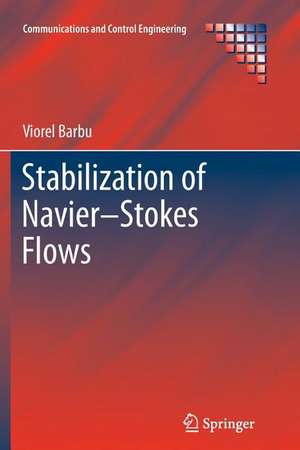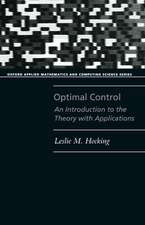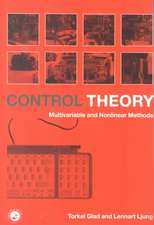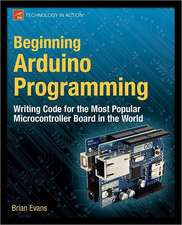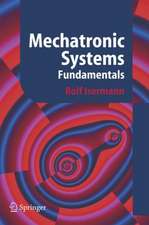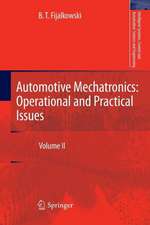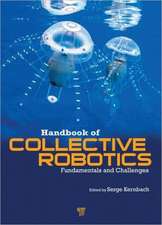Stabilization of Navier–Stokes Flows: Communications and Control Engineering
Autor Viorel Barbuen Limba Engleză Paperback – 27 ian 2013
| Toate formatele și edițiile | Preț | Express |
|---|---|---|
| Paperback (1) | 640.06 lei 6-8 săpt. | |
| SPRINGER LONDON – 27 ian 2013 | 640.06 lei 6-8 săpt. | |
| Hardback (1) | 646.30 lei 6-8 săpt. | |
| SPRINGER LONDON – 2 dec 2010 | 646.30 lei 6-8 săpt. |
Din seria Communications and Control Engineering
- 18%
 Preț: 953.65 lei
Preț: 953.65 lei - 18%
 Preț: 953.65 lei
Preț: 953.65 lei - 18%
 Preț: 1128.08 lei
Preț: 1128.08 lei - 20%
 Preț: 879.71 lei
Preț: 879.71 lei - 18%
 Preț: 1117.03 lei
Preț: 1117.03 lei - 15%
 Preț: 659.70 lei
Preț: 659.70 lei - 15%
 Preț: 656.89 lei
Preț: 656.89 lei - 18%
 Preț: 896.52 lei
Preț: 896.52 lei - 18%
 Preț: 1113.26 lei
Preț: 1113.26 lei - 18%
 Preț: 1388.22 lei
Preț: 1388.22 lei - 15%
 Preț: 647.27 lei
Preț: 647.27 lei - 18%
 Preț: 954.45 lei
Preț: 954.45 lei - 18%
 Preț: 1231.47 lei
Preț: 1231.47 lei - 18%
 Preț: 948.92 lei
Preț: 948.92 lei - 18%
 Preț: 1232.57 lei
Preț: 1232.57 lei - 15%
 Preț: 643.34 lei
Preț: 643.34 lei - 18%
 Preț: 1127.28 lei
Preț: 1127.28 lei - 18%
 Preț: 1401.30 lei
Preț: 1401.30 lei - 15%
 Preț: 651.51 lei
Preț: 651.51 lei - 20%
 Preț: 1454.07 lei
Preț: 1454.07 lei - 18%
 Preț: 948.79 lei
Preț: 948.79 lei - 18%
 Preț: 1233.06 lei
Preț: 1233.06 lei - 18%
 Preț: 947.85 lei
Preț: 947.85 lei - 18%
 Preț: 950.96 lei
Preț: 950.96 lei - 18%
 Preț: 956.99 lei
Preț: 956.99 lei - 15%
 Preț: 644.18 lei
Preț: 644.18 lei - 18%
 Preț: 946.87 lei
Preț: 946.87 lei - 18%
 Preț: 951.14 lei
Preț: 951.14 lei - 18%
 Preț: 961.55 lei
Preț: 961.55 lei - 15%
 Preț: 644.18 lei
Preț: 644.18 lei - 20%
 Preț: 990.80 lei
Preț: 990.80 lei - 18%
 Preț: 1006.72 lei
Preț: 1006.72 lei - 18%
 Preț: 942.44 lei
Preț: 942.44 lei - 18%
 Preț: 1233.06 lei
Preț: 1233.06 lei - 15%
 Preț: 641.85 lei
Preț: 641.85 lei - 18%
 Preț: 957.75 lei
Preț: 957.75 lei - 15%
 Preț: 649.87 lei
Preț: 649.87 lei - 18%
 Preț: 958.07 lei
Preț: 958.07 lei - 18%
 Preț: 1117.99 lei
Preț: 1117.99 lei - 18%
 Preț: 1395.94 lei
Preț: 1395.94 lei - 18%
 Preț: 781.62 lei
Preț: 781.62 lei - 18%
 Preț: 953.20 lei
Preț: 953.20 lei - 18%
 Preț: 1109.78 lei
Preț: 1109.78 lei - 18%
 Preț: 947.35 lei
Preț: 947.35 lei
Preț: 640.06 lei
Preț vechi: 753.01 lei
-15% Nou
Puncte Express: 960
Preț estimativ în valută:
122.48€ • 128.04$ • 103.50£
122.48€ • 128.04$ • 103.50£
Carte tipărită la comandă
Livrare economică 06-20 martie
Preluare comenzi: 021 569.72.76
Specificații
ISBN-13: 9781447126102
ISBN-10: 1447126106
Pagini: 288
Ilustrații: XII, 276 p.
Dimensiuni: 155 x 235 x 15 mm
Greutate: 0.41 kg
Ediția:2011
Editura: SPRINGER LONDON
Colecția Springer
Seria Communications and Control Engineering
Locul publicării:London, United Kingdom
ISBN-10: 1447126106
Pagini: 288
Ilustrații: XII, 276 p.
Dimensiuni: 155 x 235 x 15 mm
Greutate: 0.41 kg
Ediția:2011
Editura: SPRINGER LONDON
Colecția Springer
Seria Communications and Control Engineering
Locul publicării:London, United Kingdom
Public țintă
ResearchCuprins
Preliminaries.- Stabilization of Abstract Parabolic Systems.- Stabilization of Navier–Stokes Flows.- Stabilization by Noise of Navier–Stokes Equations.- Robust Stabilization of the Navier–Stokes Equation via the H-infinity Control Theory.
Recenzii
From the book reviews:
“The book is well written and nice to read. Each chapter is followed by numerous references. Many of the results presented in the book come from papers by the author and co-authors. This book is an excellent introduction to the subject and is recommended to researchers wanting to learn about stabilization problems for parabolic equations.” (Jean-Pierre Raymond, Mathematical Reviews, March, 2015)
“The book is well written and nice to read. Each chapter is followed by numerous references. Many of the results presented in the book come from papers by the author and co-authors. This book is an excellent introduction to the subject and is recommended to researchers wanting to learn about stabilization problems for parabolic equations.” (Jean-Pierre Raymond, Mathematical Reviews, March, 2015)
Notă biografică
Professor Barbu is a professor with the University Al.I.Cuza (Romania) and member of Romanian Academy. He had visiting professorship positions with several universities in the USA and Europe including the following: Purdue University, Cincinnati University, Virginia University, Ohio University, Bonn University, University of Bologna. He has published a dozen monographs and 170 research papers in the following fields: nonlinear PDEs, control theory of parameter distributed systems and of Navier–Stokes equations, Stochatic PDEs, integral equations.
Textul de pe ultima copertă
Stabilization of Navier–Stokes Flows presents recent notable progress in the mathematical theory of stabilization of Newtonian fluid flows. Finite-dimensional feedback controllers are used to stabilize exponentially the equilibrium solutions of Navier–Stokes equations, reducing or eliminating turbulence. Stochastic stabilization and robustness of stabilizable feedback are also discussed. The text treats the questions:
• What is the structure of the stabilizing feedback controller?
• How can it be designed using a minimal set of eigenfunctions of the Stokes–Oseen operator?
The analysis developed here provides a rigorous pattern for the design of efficient stabilizable feedback controllers to meet the needs of practical problems and the conceptual controllers actually detailed will render the reader’s task of application easier still. Stabilization of Navier–Stokes Flows avoids the tedious and technical details often present in mathematical treatments of control and Navier–Stokes equations and will appeal to a sizeable audience of researchers and graduate students interested in the mathematics of flow and turbulence control and in Navier-Stokes equations in particular. The chief points of linear functional analysis, linear algebra, probability theory and general variational theory of elliptic, parabolic and Navier–Stokes equations are reviewed in an introductory chapter and at the end of chapters 3 and 4.
• What is the structure of the stabilizing feedback controller?
• How can it be designed using a minimal set of eigenfunctions of the Stokes–Oseen operator?
The analysis developed here provides a rigorous pattern for the design of efficient stabilizable feedback controllers to meet the needs of practical problems and the conceptual controllers actually detailed will render the reader’s task of application easier still. Stabilization of Navier–Stokes Flows avoids the tedious and technical details often present in mathematical treatments of control and Navier–Stokes equations and will appeal to a sizeable audience of researchers and graduate students interested in the mathematics of flow and turbulence control and in Navier-Stokes equations in particular. The chief points of linear functional analysis, linear algebra, probability theory and general variational theory of elliptic, parabolic and Navier–Stokes equations are reviewed in an introductory chapter and at the end of chapters 3 and 4.
Caracteristici
Provides applied mathematicians with methods for control of fluids as examples of more general partial-differential-equation-control problems Gives the control researcher a more sophisticated method of treating flow-control problems than traditional passivity-based approaches Provides conceptual designs for controllers to start readers on the path to their own practical flow control systems Includes supplementary material: sn.pub/extras
